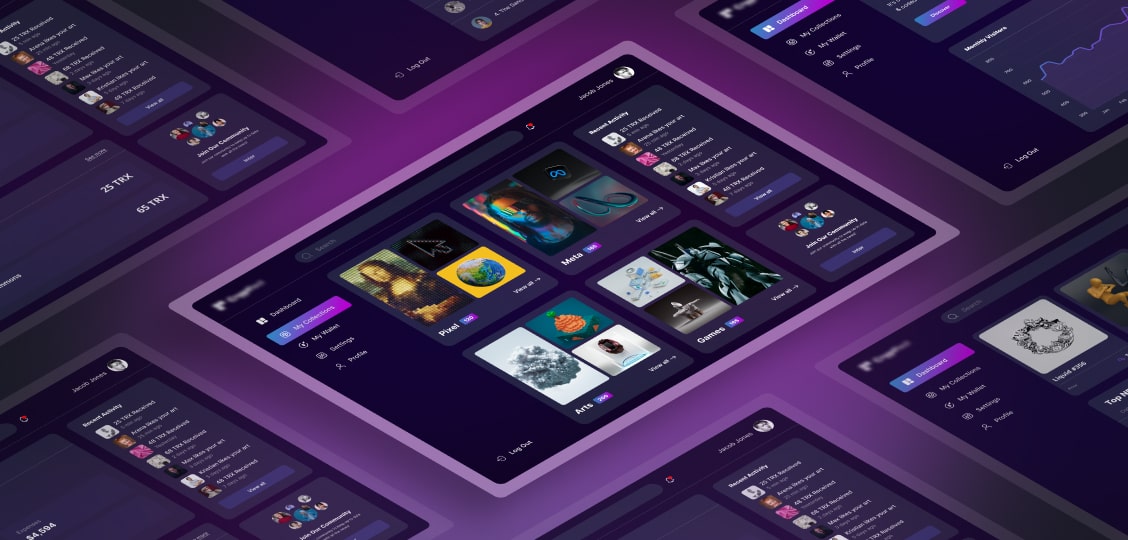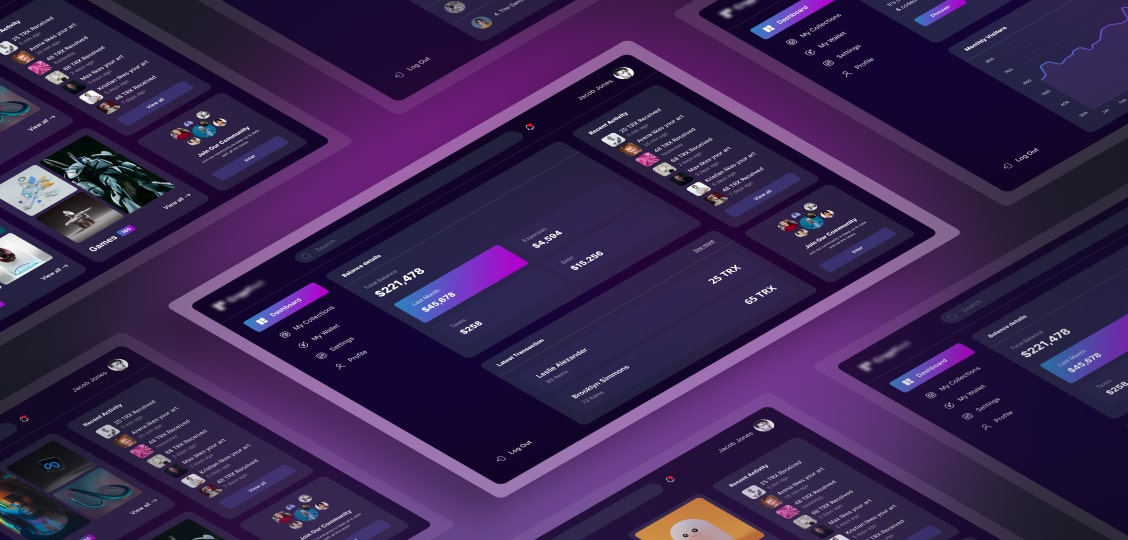
We’d love to work with you
Drop us a line about your idea, project, or challenge.
We’d like to discuss how we can help you.

Find out how our team created an online NFT marketplace that provides advanced analytics and reporting on sales, price changes, and user behavior.
6.5 months
3 frontend developers, 3 backend developers, 2 blockchain developers, a UI/UX designer, 3 quality assurance engineers, a project manager, a business analyst.
TypeScript, React, Redux, Redux-Saga, Web 3.0, Tron, TRON Virtual Machine (TVM), Solidity, Python, Django, Django Channels, Celery, Node.js, Express.js, D3.js, AWS, Amazon S3, Amazon EC2, Amazon CloudFront, Amazon Elastic Load Balancing, Elasticsearch, Amazon Rekognition content moderation API, WebSockets, RabbitMQ, Redis, Memcached, InterPlanetary File System (IPFS), WalletConnect API, MongoDB, PostgreSQL.





Drop us a line about your idea, project, or challenge.
We’d like to discuss how we can help you.